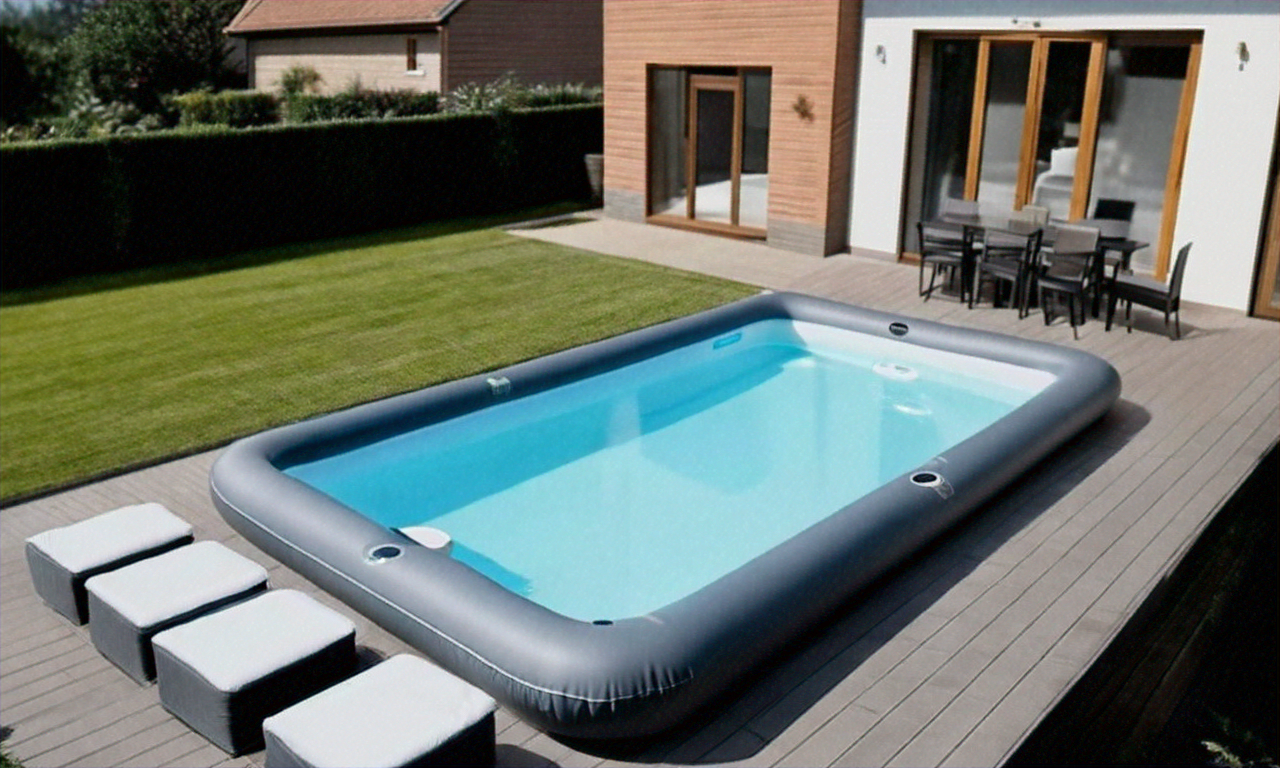Small Pools: Benefits, Space Requirements, and Care
Small pools have become increasingly popular among homeowners seeking to enhance their outdoor living spaces without the extensive commitment of a full-sized swimming pool. These compact aquatic additions offer a range of benefits while requiring less space and maintenance than their larger counterparts. In this article, we'll explore the advantages of installing a small pool, space considerations, installation process, common features, and ongoing care requirements.

What Are the Benefits of Installing a Small Pool at Home?
Installing a small pool at home can significantly improve your quality of life and property value. These compact water features provide numerous advantages:
-
Space Efficiency: Small pools are perfect for urban homes or properties with limited outdoor space, allowing you to enjoy aquatic relaxation without sacrificing your entire yard.
-
Cost-Effective: Compared to full-sized pools, small pools are generally more affordable to install, maintain, and operate, making them accessible to a broader range of homeowners.
-
Versatility: Many small pools can be used for both recreation and exercise, with some designs incorporating jets for swimming in place or hydrotherapy features.
-
Aesthetic Appeal: A well-designed small pool can serve as a beautiful focal point in your outdoor living area, enhancing the overall ambiance of your property.
-
Year-Round Use: Some small pools can be more easily heated or covered, extending their usability into cooler months or even year-round in some climates.
-
Reduced Maintenance: With less water volume and surface area, small pools typically require less time and effort to keep clean and balanced.
How Much Outdoor Space Is Typically Needed for a Small Pool?
The amount of outdoor space needed for a small pool can vary depending on the specific design and local regulations. However, here are some general guidelines:
-
Pool Size: Small pools typically range from 10 to 20 feet in length and 6 to 12 feet in width. The depth can vary but is often between 3 to 5 feet.
-
Surrounding Area: You’ll need additional space around the pool for decking, seating, and safety features. A good rule of thumb is to add at least 3 feet of decking on all sides of the pool.
-
Total Footprint: Considering the pool and surrounding area, you should plan for a minimum of 200 to 400 square feet of outdoor space for a small pool installation.
-
Zoning Requirements: Check local zoning laws and homeowners’ association rules, as they may dictate minimum setbacks from property lines or structures.
-
Access Considerations: Ensure there’s enough space for maintenance equipment and potential future repairs or renovations.
What Installation Steps Are Involved in Adding a Small Pool?
Installing a small pool involves several key steps:
-
Planning and Design: Work with a pool designer or contractor to create a plan that fits your space, budget, and desired features.
-
Permits and Approvals: Obtain necessary permits from local authorities and approvals from homeowners’ associations if applicable.
-
Site Preparation: Clear the area, perform any required excavation, and prepare the ground for the pool structure.
-
Pool Installation: This may involve constructing a concrete shell, installing a fiberglass insert, or assembling an above-ground structure, depending on the pool type.
-
Plumbing and Electrical: Install the necessary plumbing for circulation and filtration, as well as electrical connections for pumps, lights, and other features.
-
Decking and Finishing: Complete the surrounding deck area and add any finishing touches like coping or tiles.
-
Safety Features: Install required safety elements such as fencing, covers, or alarms as mandated by local regulations.
-
Filling and Balancing: Fill the pool with water and balance the chemical levels for safe use.
Which Features Are Commonly Included in Small Pool Designs?
Small pools can incorporate a variety of features to enhance their functionality and appeal:
-
Integrated Spa or Hot Tub: Many small pool designs include a separate spa section for hydrotherapy and relaxation.
-
Water Features: Waterfalls, fountains, or bubblers can add visual interest and soothing sounds.
-
LED Lighting: Underwater lights create ambiance for evening use and enhance safety.
-
Heating Systems: Pool heaters extend the swimming season and improve comfort.
-
Swim Jets: For exercise enthusiasts, swim jets allow for stationary swimming in compact spaces.
-
Automatic Covers: These provide safety, reduce evaporation, and help maintain water temperature.
-
Smart Pool Technology: Automated systems for monitoring and controlling pool functions via smartphone apps.
-
Seating and Lounging Areas: Built-in benches or tanning ledges optimize relaxation in limited space.
What Are the Ongoing Care Requirements for a Small Pool?
Maintaining a small pool requires regular attention to ensure clean, safe water and proper equipment function:
-
Water Testing: Check and balance pH, chlorine, and other chemical levels at least weekly.
-
Filtration: Run the pool filter daily, typically for 8-12 hours, to keep water clean and circulated.
-
Cleaning: Skim the surface, brush walls, and vacuum the pool floor weekly or as needed.
-
Chemical Treatment: Add necessary chemicals to maintain proper water balance and sanitation.
-
Equipment Maintenance: Regularly inspect and clean the pump, filter, and other system components.
-
Winterization: In colder climates, properly close the pool for winter to prevent damage from freezing.
-
Safety Checks: Regularly inspect safety features like fences, covers, and alarms to ensure they’re functioning correctly.
-
Professional Services: Schedule periodic professional inspections and cleanings to address any issues beyond routine maintenance.
By understanding these aspects of small pool ownership, homeowners can make informed decisions about whether a compact aquatic retreat is right for their property. With proper planning, installation, and care, a small pool can provide years of enjoyment and enhance outdoor living spaces significantly.




